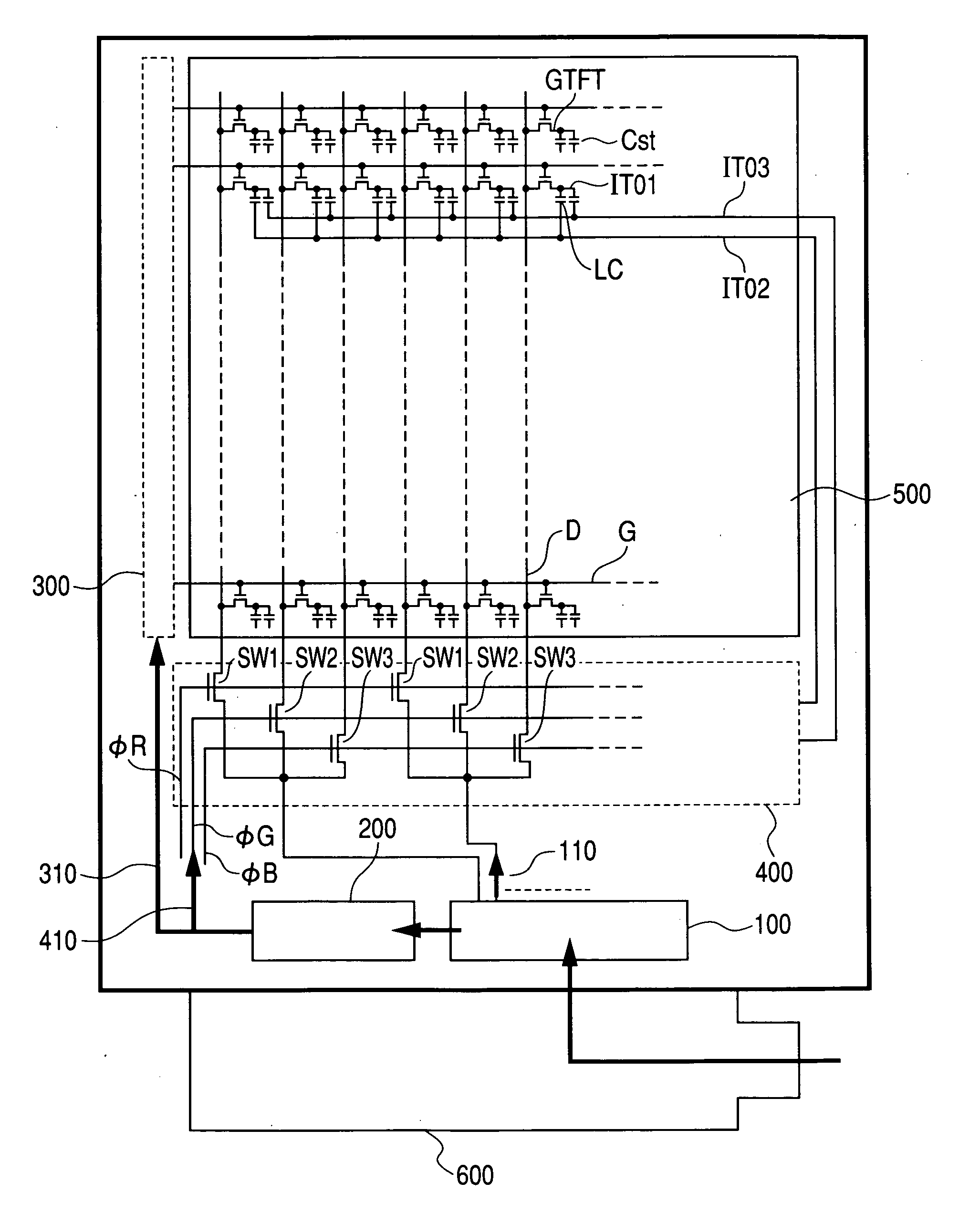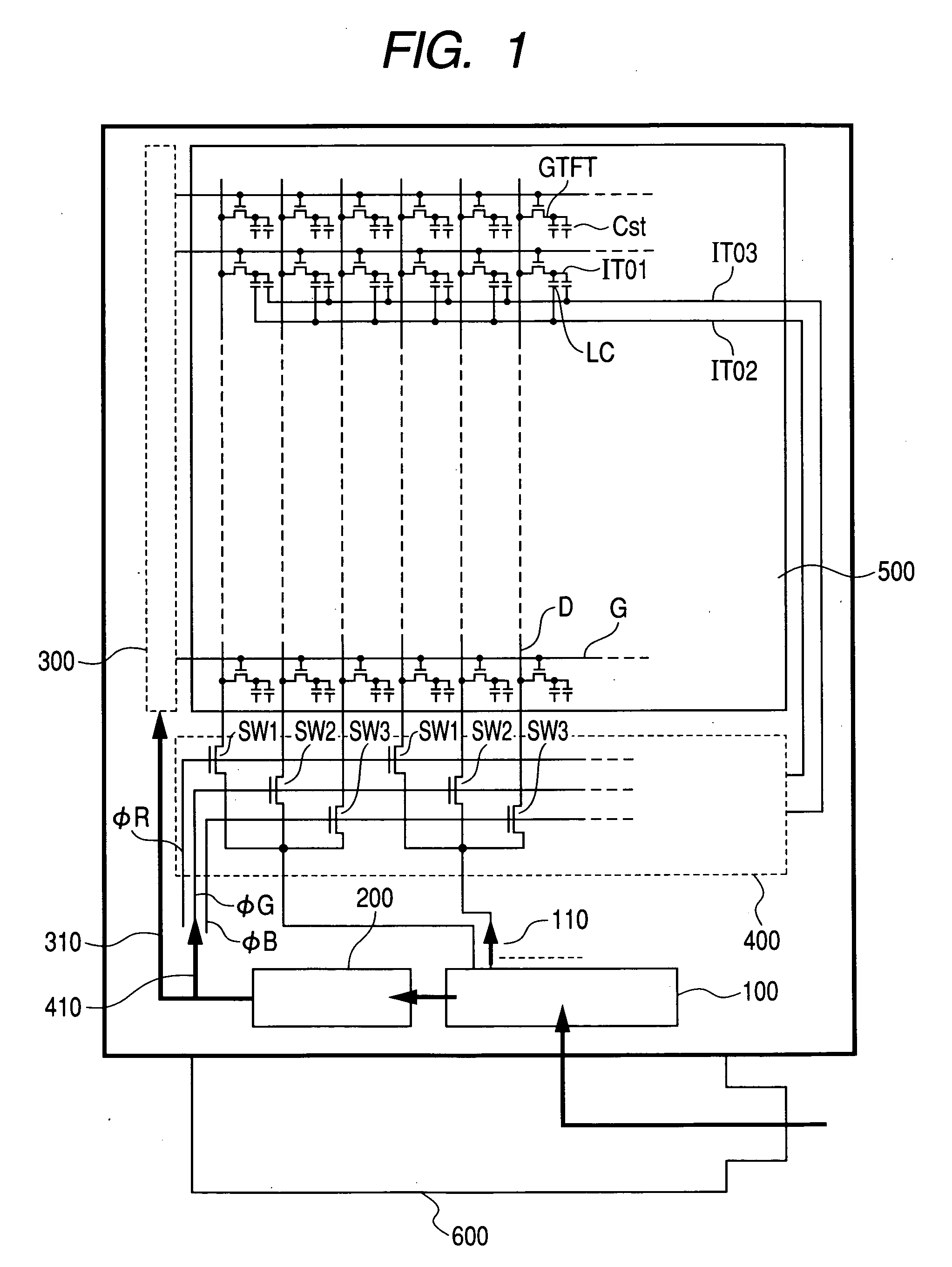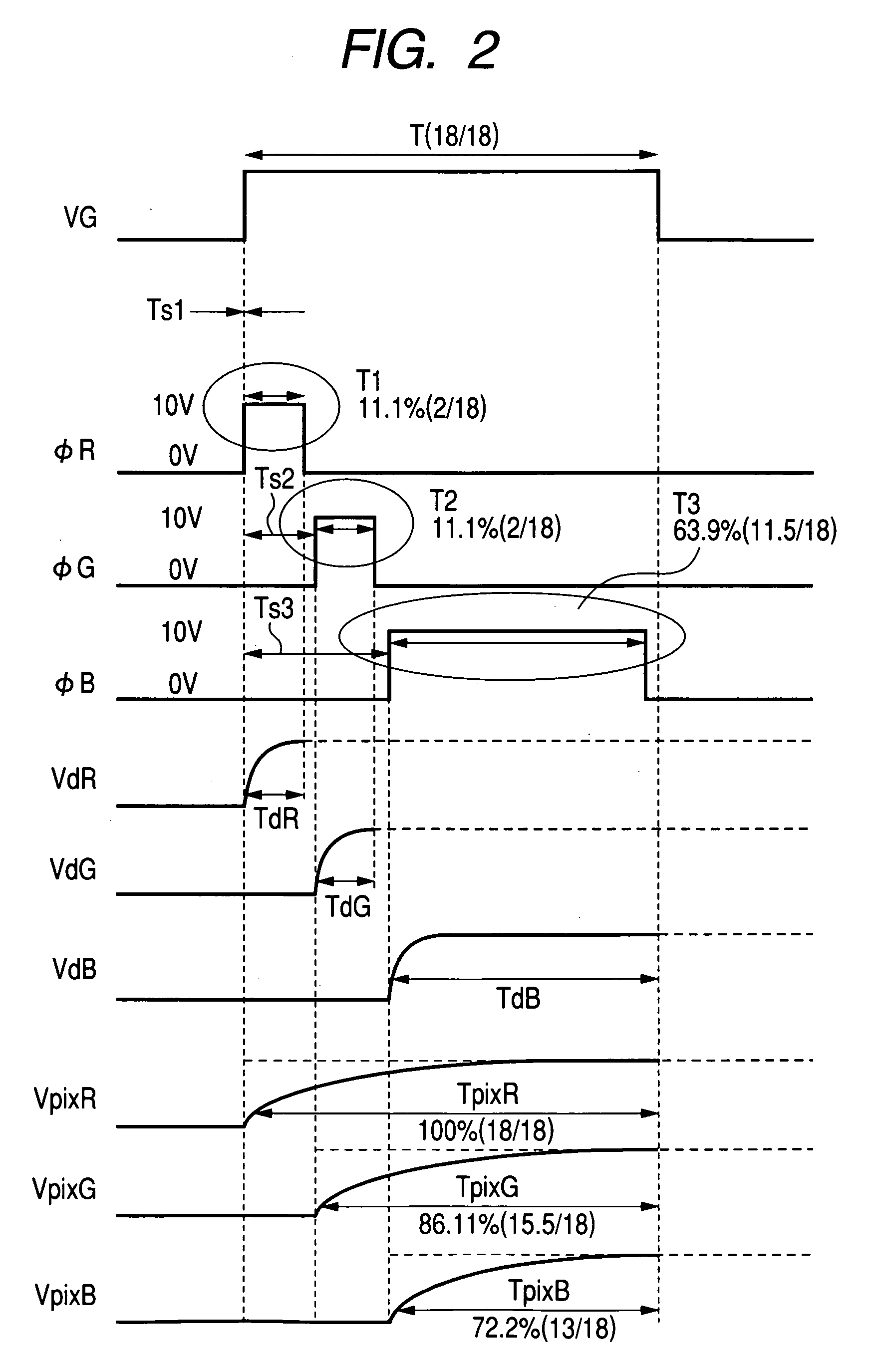Display device
a display device and display technology, applied in static indicating devices, instruments, non-linear optics, etc., can solve the problems of insufficient time for writing gray scale voltages from video lines into sub-pixels, difficult routing of interconnection wiring, etc., and achieve the effect of reducing time and improving definition
- Summary
- Abstract
- Description
- Claims
- Application Information
AI Technical Summary
Benefits of technology
Problems solved by technology
Method used
Image
Examples
example 1
[0030]FIG. 1 is a block diagram illustrating a rough configuration of a liquid crystal display module in accordance with Example 1 of the present invention. The liquid crystal display module of Example 1 is a polysilicon type liquid crystal display module which uses polysilicon as semiconductor layers of thin film transistors (TFTs).
[0031] The liquid crystal display module of Example 1 comprises a drain driver (a video line drive circuit) 100, a power supply circuit 200, a gate scanning circuit 300, a drain line selection switching circuit 400, and a display section 500. The drain line selection switching circuit 400 comprises a plurality of the circuits shown in FIG. 7. The display section 500 includes a plurality (for example, 240×320××3) of sub-pixels arranged in a matrix fashion, a plurality of video lines D (also called drain lines) for supplying video signal voltages to respective sub-pixels, and a plurality of scanning lines G (also called gate lines) for supplying scanning ...
example 2
[0070] In Example 1, times during which the video line selection pulses φR, φG and φB stay at the H level are not equal to each other in duration, but are made unequal to each other. To be concrete, T1=T23.
[0071] Therefore, there is concern that the video-line writing times TdR and TdG for writing gray scale voltages into corresponding ones of the video lines D after the switching elements SW1 and SW2 being turned on might be insufficient in some cases. This Example 2 solves this problem.
[0072]FIG. 3 is an illustration for explaining a time-division multiplexed driving method of this Example 2. As shown in FIG. 3, in this Example 2, times during which the video line selection pulses φR, φG and φB stay at the H level are not equal to each other in duration, but are made unequal to each other. In addition to this, voltages VG1 and VG2 corresponding to the H levels of the video line selection pulses φR and φG, respectively, are selected to be higher than a voltage VG3 corresponding t...
example 3
[0079] As in the case of Example 2, this Example 3 also solves the problem of possible insufficiency of the video-line writing times TdR and TdG for writing gray scale voltages into corresponding ones of the video lines D after the switching elements SW1 and SW2 are turned on.
[0080] This Example 3 selects the ON-currents of the thin film transistors forming the switching elements SW1 and SW2 to be larger than the ON-current of the thin film transistor forming the switching element SW3. The voltages VdR, VdG and VdB rise when the video line selection pulses φR, φG and φB go to the H levels, respectively. In this Example 3, since the ON-currents of the thin film transistors forming the switching elements SW1 and SW2 are made larger than the ON-current of the thin film transistor forming the switching element SW3, the voltages VdR and VdG rise more sharply than the voltage VdB like in the portions designated B in FIG. 3. This prevents the video-line writing times TdR and TdG from beco...
PUM
| Property | Measurement | Unit |
|---|---|---|
| gray scale voltages | aaaaa | aaaaa |
| voltages | aaaaa | aaaaa |
| Tm | aaaaa | aaaaa |
Abstract
Description
Claims
Application Information
 Login to View More
Login to View More - R&D
- Intellectual Property
- Life Sciences
- Materials
- Tech Scout
- Unparalleled Data Quality
- Higher Quality Content
- 60% Fewer Hallucinations
Browse by: Latest US Patents, China's latest patents, Technical Efficacy Thesaurus, Application Domain, Technology Topic, Popular Technical Reports.
© 2025 PatSnap. All rights reserved.Legal|Privacy policy|Modern Slavery Act Transparency Statement|Sitemap|About US| Contact US: help@patsnap.com



